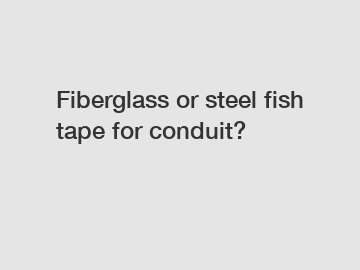Seed germination and seedling growth have strict requirements on soil, temperature, humidity, and sunlight, so they need careful care. Although most vegetables can be sown directly in the field, they are often neglected due to poor care, such as not watering in time, or excessive or insufficient sunlight, coupled with the invasion of various pathogens in the soil, resulting in low seed germination rates, many seedlings are poorly developed, and even die from diseases.
Therefore, in order to improve the germination rate of seeds and the survival rate of seedlings, and to make the surviving seedlings grow stronger, seedling cultivation is necessary.
If you want to enjoy seasonal vegetables earlier, or want to taste some foreign vegetables that are not suitable for the local climate, seedling cultivation is even more indispensable. In particular, in cold areas with a short growing season, if seedling cultivation is not carried out in advance, many vegetables cannot be planted at all.
However, the most common mistake made when raising seedlings is to raise them for too long. As the seedlings grow, their roots become more developed and require more space to develop. At this time, the narrow space in the seedling pot inhibits its growth, and the consequences range from poor development to serious failure to growth or abnormal flowering and fruiting. Instead of raising seedlings in this way, it is better to plant them directly in the ground.
In cold areas, seedling raising should not start too early. Generally speaking, vegetables that take more than 4 months to mature can be raised 6-8 weeks earlier than planting in the ground. If vegetables can mature in 3-4 months, they can be raised 4-6 weeks earlier, and vegetables that can mature within 3 months can be raised 2-4 weeks earlier.
Next, let's learn how to raise seedlings.
First, let's take a look at what facilities are needed for seedling raising.
Facilities required for seedling raising
Seedling raising box
You can buy a ready-made seedling box or make one yourself with wooden boards.
The width and length of the seedling raising box are generally 30*45 cm, or 45*60 cm. The height of the seedling raising box is 10 cm. The most important thing is that there must be a row of drainage holes or a 0.5 cm wide drainage slit at the bottom of the box. If you use a large flower pot instead of a seedling box, it is also OK.
Seedling pot
Although you can buy plastic seedling bags or seedling pots, peat pots, and paper seedling pots of various specifications on the market, we can still make seedling pots by ourselves. First, this can give children something to do, second, it can save some expenses, and third, it can also give full play to our potential for creativity and invention.
We can use kraft paper to make seedling pots.
Cut the kraft paper into long strips (the width of the strip is the depth of the pot) and wrap it tightly around a bottle of the right size. Then tie the paper with a strong cotton thread, one at the top, middle, and bottom. Finally, pull out the bottle, and the seedling pot is ready.
The paper seedling pot is breathable. When transplanting, you can bury the pot and the seedlings in the soil together, without hurting the roots of the vegetables at all, and there is no need to worry about polluting the environment.

Featured content:How to Choose the Best Big Cylindrical Battery 32140?How Does Small Solar Panel 100W Work?The Advantages of Implementing Wireless Smart Home TechnologyHow to Select the Perfect Cast Iron Centrifugal Pump?10 Questions You Should Know about Cylindrical Sodium Ion Battery CellsEssential Guide to Teflon Lined Pumps: Benefits & FAQsHow do I choose a mist eliminator?In addition, disposable paper cups, yogurt cups, ice cream cups, cans, and mineral water bottles can also be converted into seedling pots. Just remove the bottom and cut the height to a certain size.
Generally speaking, the height of the seedling pot should be slightly larger than the diameter. The diameter of the seedling pot depends on what vegetables are planted. Large vegetables use large pots, and small vegetables use small pots. The recommended diameter of the seedling pot for melons is about 12 cm, and that for vegetables such as eggplant, cabbage, and cauliflower is about 9 cm, while that for beans is 6 cm.
You also need to make some garden trays for these bottomless seedling pots. Cut the plywood into appropriate sizes and nail a circle of wooden strips on the edges to make a tray. Spread a layer of gravel on the trays and place the bottomless seedling pots on these trays for use. If you are only planting on the balcony or roof, you can use plastic boxes for packaging dried fruits as trays.
Seedling soil
The soil in the vegetable garden cannot be used directly for seedlings. First, this soil is too sticky for seeds. Second, because the soil contains many pathogens and insect eggs, the resistance of seedlings is not strong, and it is easy to be infected with diseases (such as root rot, etc.) when growing in this soil.
There are many ways to prepare seedling soil. You can even buy ready-made seedling soil on the market. Its main ingredients are vermiculite, peat moss, perlite mineral sand, and some fertilizers.
We can prepare seedling soil by ourselves. A relatively simple formula is: mix one part of compost, one part of sterilized garden soil, and one part of sand in equal proportions by volume. The compost, garden soil, and sand must be sieved with a sieve with a mesh of 3-6 mm in advance.
Seedling site and simple greenhouse
The seedling site must be in a sheltered, sunny and ventilated place with at least 5 hours of sunshine every day. Like a vegetable bed, the seedling site should be higher than the ground and covered with a layer of stones and gravel to keep it dry.
If the spring is cold in your area, you also need to build two simple greenhouses on it, one transparent one that allows sunlight to shine in and is used to place seedlings; the other black one is used to place seedling boxes, seedling pots, and newly transplanted seedlings waiting for seeds to germinate.
The height of the greenhouse is about 30-40 cm, and the width is preferably convenient for operation from both sides, and the length is not limited.
The materials required are: two pieces of transparent plastic film, a black shade net, and some bamboo strips.
Cut each bamboo strip into about 2.5 meters long.
Bend the bamboo strips and insert the two ends into the soil about 30 cm. The distance between the bamboo strips is about half a meter.
Then cover it with transparent plastic film and black shade net. Press the two sides of the film with soil. Leave the two ends open for ventilation.
Learn more
Featured content:Types of Vibration TableHow Do Cylindrical Lithium Cells Work?Cylindrical Lithium Cells vs. Prismatic Cells: Which Reigns Supreme?How LFP40140 Cells Revolutionize Sustainable Energy Solutions?4 Tips to Select the Best LFP40140 Battery Cells10 Questions You Should Know about Electric Vehicle Battery Technology10 Questions You Should Know about Electric Vehicle Battery Technology











Comments
Please Join Us to post.
0